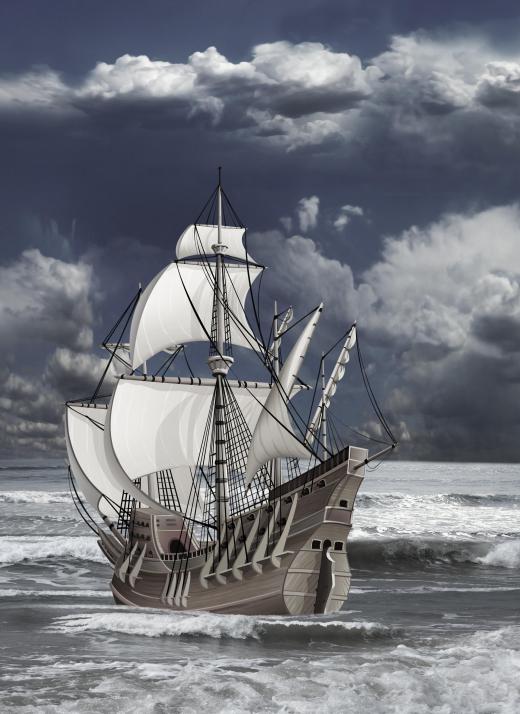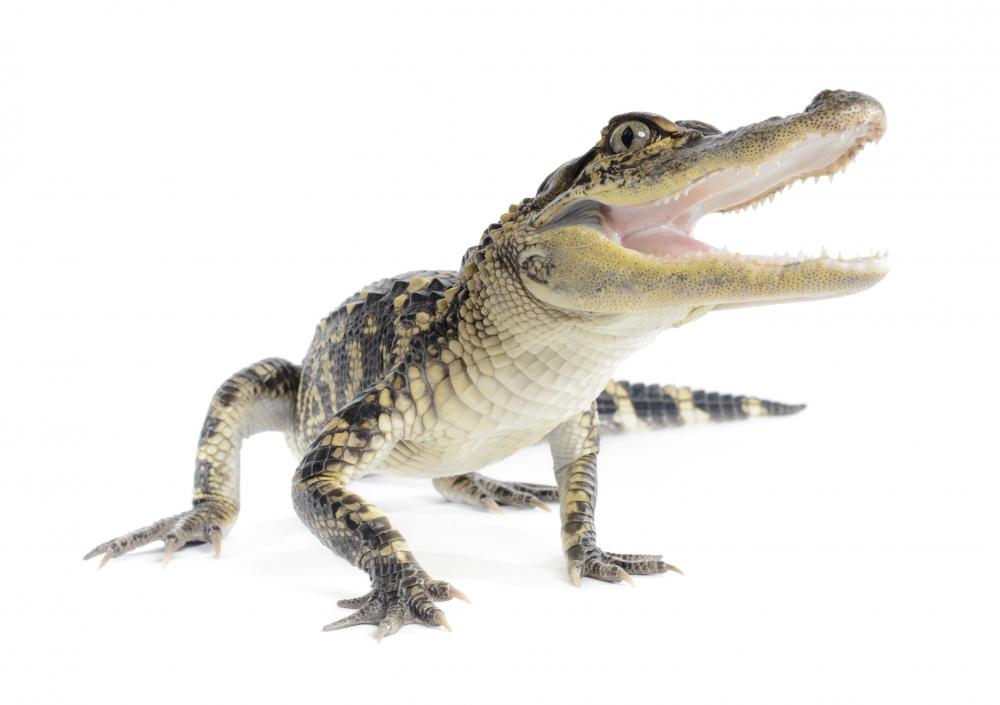At AllThingsNature, we're committed to delivering accurate, trustworthy information. Our expert-authored content is rigorously fact-checked and sourced from credible authorities. Discover how we uphold the highest standards in providing you with reliable knowledge.
What are Some Famous Sea Monsters?
Famous sea monsters have long been the stuff of fish-stories, warnings, and mariners’ tales. From dangerous drawings on early maps to souvenirs sold by the shores of Loch Ness, the tales of sea monsters have intrigued and frightened humans for centuries. As human knowledge of marine biology increases, many of the sea monsters our ancestors feared have become mundane, even harmless, realities. Yet some, like the giant squid, Loch Ness, and Lake Champlain Monsters seem to defy our attempts to understand and identify them, leaving the waters of the world still open to fantastical stories.
The Kraken, a many-tentacled, ship-eating sea monster, has been recorded in Norse history since the mid-13th century. Large enough to be mistaken for an island, the Kraken was said to be able to pull a ship to the bottom of the ocean. Descriptions for this sea monster ranged somewhere between squid and octopus, and experts now believe the Kraken legend is based on real stories of Architeuthis, the very real and very large giant squid. These real-life sea monsters have lent itself to legend quite easily, as they are famously elusive. Not until 2006 was a live giant squid ever recorded on film, although carcasses have washed up on beaches for many years.

The other depiction of the Kraken as a giant octopus has never truly been debunked. The largest specimen of octopus ever found measured at 23 feet (7 m) and weighing 156.5 lb (71 kg.) Yet stories of truly giant octopus continue, with some claiming carcasses have been discovered, just not correctly identified. The St. Augustine Monster, an enormous carcass of unidentifiable animal tissue, is considered by some to be positive evidence of a giant octopus.

Stories of mermaids or Sirens have existed since at least 1000 B.C.E., and give these half-fish, half-human creatures a murky reputation. Sirens are true sea monsters based on Greek mythology, who would lure sailors by singing to them before drowning them. Mermaids are sometimes given a gentler portrayal, occasionally given credit for rescuing shipwrecked sailors. The modern explanation for mermaid sightings is that the viewers were seeing manatees or dugong. Although theories cannot quite explain mistaking the cow-like visage of a manatee for the long haired, beautiful mermaid, they point out that the manatee and dugong were given the scientific name Sirenia and were often referred to as mermaids by sailors.

Stories of surviving plesiosaurs have given rise to the belief in a class of creatures often called “lake monsters.” These rarely seen, not entirely disproved sea-monsters include the Loch Ness Monster, the Lake Champlain Monster, and the Lake Okanagan Monster, also called Ogopogo. Evidence for lake monsters dates back hundreds of years, and sightings are based on eyewitness accounts and occasionally photographs or videos. The existence of lake monsters is taken so seriously, several scientific studies have been undertaken to discover if they are real or not. No conclusive evidence has ever been found.

In ancient maps, sea monsters frequently appear as illustrations. These creatures are variously depicted as resembling snakes, alligators and sharks. To ancient mariners, actual sea creatures did pose real danger in case of shipwreck, but most sea-monsters were eventually discovered to be mostly harmless whales, dolphins, and eels. Nevertheless, it is undeniable that some reports of sea monsters have not yet been explained. Human knowledge of the depths of the oceans is far from complete, and it is possible the waters of earth hold sea monsters we have not yet discovered.
Frequently Asked Questions
What are some of the most famous sea monsters in mythology?

Among the most renowned sea monsters in mythology are the Kraken, a gigantic creature feared by sailors in Norse legends, and Scylla and Charybdis from Greek mythology, which personify deadly maritime hazards. The Loch Ness Monster, or Nessie, is a modern addition, reputed to inhabit Scotland's Loch Ness.
Are there any historical accounts of sea monster encounters?

Yes, throughout history, there have been numerous accounts of sea monster encounters. Notably, the giant squid, once a creature of legend, has been confirmed by scientists to exist, with specimens reaching up to 43 feet in length, according to the Smithsonian Institution. These encounters often inspired tales of monstrous creatures like the Kraken.
How have sea monsters influenced maritime folklore?
Sea monsters have significantly influenced maritime folklore, symbolizing the unknown dangers of the ocean. They served as cautionary tales for sailors, embodying the perils of sea voyages. Their stories were often passed down through generations, becoming an integral part of the cultural heritage of seafaring communities.
Can any real animals be mistaken for sea monsters?
Absolutely. Many real animals have been mistaken for sea monsters, such as the oarfish, which can grow up to 36 feet long and may have contributed to serpent-like sea monster tales. Large whales or basking sharks, when seen from a distance or in poor visibility, can also be misconstrued as monstrous creatures.
What role do sea monsters play in popular culture?
Sea monsters have a prominent role in popular culture, appearing in literature, film, and video games. They often symbolize the fears and challenges the protagonists must overcome, serving as metaphors for personal or societal issues. Their enduring appeal lies in their mystery and the thrill of the unknown.
Is there any scientific basis for the existence of sea monsters?
While most sea monsters are mythical, the discovery of deep-sea creatures like the colossal squid shows that the ocean depths harbor many unusual species. The vast unexplored areas of the ocean could potentially hide unknown creatures, but the classic depictions of sea monsters remain largely within the realm of folklore and myth.
AS FEATURED ON:
AS FEATURED ON:
















Discussion Comments
@ GenevaMech- You make an interesting point that raises some good questions. I never thought of ocean exploration in that way. This discussion sparked my interest so I researched how much of the deep ocean scientists have explored. According to the NOAA, researchers have explored only five percent of the world's oceans. Scientists still have lifetime’s worth of discoveries to make.
It seems like every deep ocean expedition turns up new species, and grand new discoveries. Deep ocean discoveries are reshaping how we view the basis of life itself. Your assumptions may not be farfetched. Who knows, maybe within our lifetime scientists may encounter true sea monsters.
When I was a kid, I had a big book of Greek mythology, and sea monsters were central characters in many of the myths. I assume it was because the ancient Greek civilization was a seafaring civilization, but you have to wonder if the Greeks actually based some of the monsters in those myths on creatures now extinct. We can't excavate the oceans to find fossil records.
The only way we can know what creatures once swam the oceans is to study coastal fossil records and fossil records from ancient seas. This leaves a large gap that includes deep-sea creatures from the last 100,000 years or more (recent geologic history anyway). This just goes to show how little the scientific community knows about the deep ocean.
Post your comments